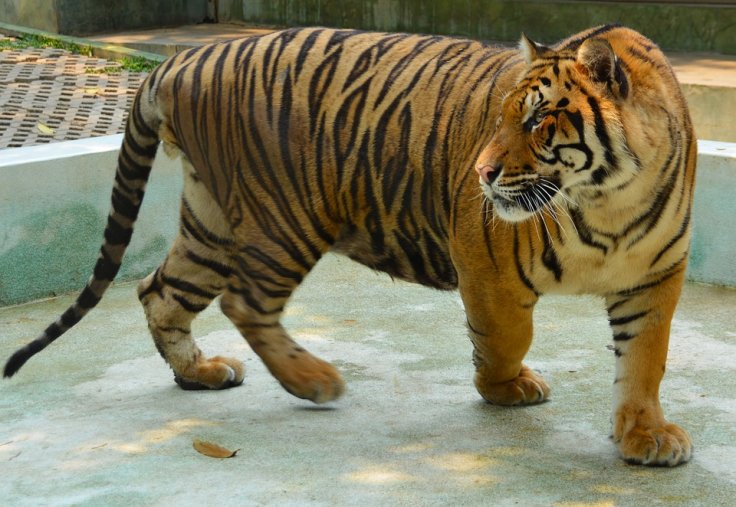
The pan-India tiger census to begin later this month will aim at higher accuracy for which the authorities have decided to double the number of camera traps and include new regions, mostly in Uttarakhand. The census is held every four years.
With about 70 per cent of the world's free-ranging tigers, India is home to 2,226 of this endangered species, of which about 640 roar outside tiger reserves.
"The grid size has been reduced this time. Earlier, a grid was of 4 sq km; this time it will be of 2 sq km. Every grid has a pair of camera-traps," Sanjay Kumar, DIG, National Tiger Conservation Authority (NTCA), told IANS.
The survey area will also increase because of formation of new tiger reserves since the 2014 census.
That survey had covered 473,580 sq km of forests, including 44 tiger reserves, spanning 18 states. However, by January 2018, the total number of tiger reserves have increased to 50. The contours of the present survey are being worked out and would be finalised by the time it begins in end-January. Preliminary data will start flowing in from late April and the complete picture is likely by November-end.
Never entirely accurate, the population-estimation is based on data fetched over several days through camera-traps and scat-collection (for DNA based estimation). The images from camera-traps are fed into a "population size estimator" software, which, based on the field conditions of the terrain involved, gives different estimations of the population size. For 2014, the lower and upper estimation was 1,945 and 2,491, of which 2,226 was considered to be the closest proximity.
"The numbers are never accurate and are not supposed to be accurate either. The aim is to get an idea through rough estimates of population variation, density and turnover rate or new-borns over time, so that conservation could be planned accordingly," Dr Parag Madhukar Dhakate, Conservator of Forests, Western Circle, Uttarakhand, told IANS.
He added that individual tiger records, however, consider the stripes which are distinct and act like finger-prints of the felines.
Meanwhile, new mountainous terrain in Uttarakhand has been earmarked for the survey, after the big cats were discovered in 2016 beyond 3,000 metres altitude in the Kedarnath (Chamoli and Rudraprayag district) and Askot wildlife sanctuaries (Pithoragarh district).
Dhakate said that key "tiger-bearing ranges" under Nainital and Champawat division had thus been included "for the first time in history of tiger counting".
According to the 2014 survey, Uttarakhand with an estimated 340 tigers had the second-highest feline population after Karnataka, which had 406.
"Hill ranges like Kosi, Munra, Bhawali, Naina, Badvan and others in the Nainital division and two ranges in Champawat will be surveyed for first time," Dhakate said.
Expecting better accuracy due to the reduction of grid size, Dhakate said that it would not be surprising if tiger population booms in the 2018-census.
A January 2017 report, based on phase-IV monitoring held across Terai region (Himalayan foothills) in 2016, stated that the tiger population had grown significantly with at least 71 new adults roaring.
The highest rise was recorded in Uttarakhand's Western Circle -- a huge part located outside forest reserves and spanning over 2,573.6 sq km (from Haldwani to Ramnagar) -- where the figures went up from 79 in 2014 to at least 119 adults in 2016.
At Dudhwa Tiger Reserve situated in the Terai region of Uttar Pradesh, the number of tigers increased from 53 in 2014 to at least 79 adults.
Foresters at Dudhwa Tiger Reserve have decided to go for unified survey to avoid repetition of samples. The census at Dudhwa is due in the first week of February.
"Rather than doing separate surveys at Kishanpur, Kartanighat and Dudhwa National Park, all part of one reserve, we will go for a single or unified survey," Mahaveer Koujalagi, Deputy Director of the Dudhwa Tiger Reserve, told IANS.
He, however, added that though camera traps will be doubled due to the sample size being reduced to half, the sample-days had also been reduced from 45-60 days in 2014 to 30 days in 2018.
At the Bandhavgarh Tiger Reserve in Madhya Pradesh, that has highest tiger density in India, the survey will include more regions in the buffer areas, its Director, Mridul Pathak, told IANS.
No story about tigers can be complete without mentioning the Sunderbans, which has its own peculiar set of problems like the difficulties in laying camera-traps and pollution. The 2014 census put the number of Royal Bengal Tigers, whose only home the area is, at 76.
In 2014, tigers were found active over 89,164 sq kms or "tiger sq km". Of this area, Corbett in Uttarakhand had highest estimated tiger population at 215, followed by Bandipur (120 tigers) in Karnataka and Kaziranga Tiger Reserve (103) in Assam.
With its 2,226 estimate, Census 2014 saw a 30 percent boom in population against the 1,706 in Census-2010. However, since 2014, at least 419 tigers had also died, of which at least 135 were poached.









